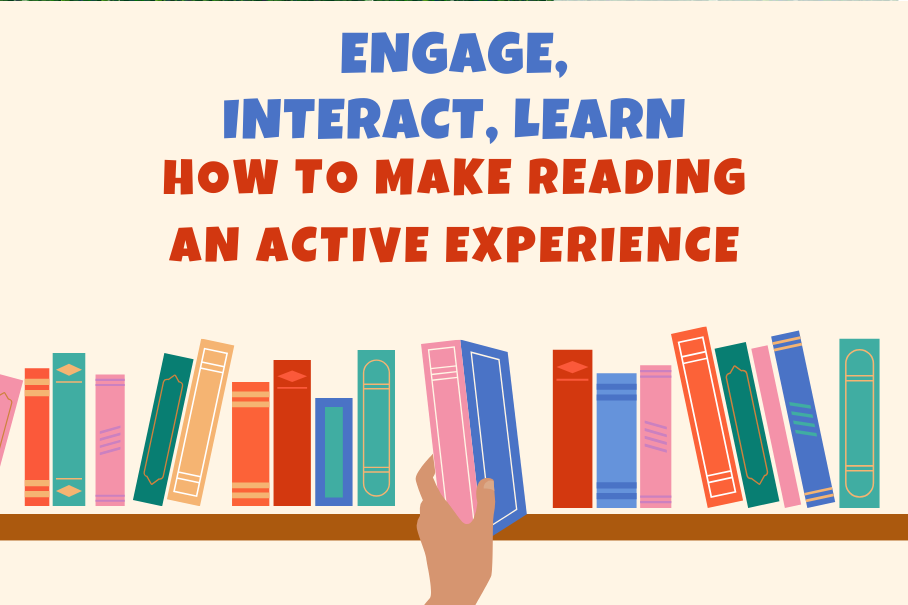Practical Tips for Making Reading a Blast This Summer
It's that time of the year again coming up quickly–summer break!
Now, we all know that when the sun's shining bright and the pool is calling, the last thing on a student’s mind might be cracking open a book.
But what if we gave you a few strategies and tips that could help turn those summer days into exciting reading adventures for your students?
Join us as we look at some tips and strategies that will make reading more exciting and an active pastime that your student will cherish.
Visual Representations: Graphic Organizers and Mind Maps
Visualize the content from books by creating graphic organizers or mind maps. This visual representation not only aids comprehension but also serves as a dynamic tool for organizing and compiling information.
By creating visual representations, students can break down complex ideas into bite-sized pieces. Whether it's character relationships, plot sequences, or thematic elements, visuals offer a structured way for students to organize and compile what they've read.
Practical Tips:
Introduce various graphic organizer formats based on the type of reading material (Venn diagrams, concept maps, timelines).
By introducing various graphic organizer formats, students have options to use the most suitable tool based on their reading material. Venn diagrams can be used for exploring the similarities and differences between characters in a story. Timelines can be used to chart the sequence of events in a story. Ultimately, each graphic organizer can be used based on what is most suitable.
Encourage students to create visuals that capture the main ideas, relationships, and key concepts.
Through creating visuals, students can capture main ideas and illustrate relationships between characters, bringing stories to life. Reading is more than just absorbing words.
Questioning Techniques: Inquiry-Based Reading
Promote active reading through questioning. Encourage readers to generate questions before, during, and after reading. This inquiry-based approach not only encourages critical thinking but also guides the reader's focus and comprehension.
Practical Tips:
Provide a set of guiding questions or teach students to develop their questioning strategies.
Use Socratic seminars. This is like a friendly gathering where every student gets a chance to express their opinions, ask questions, and dive into the details of a story or a big idea. There's no right or wrong answer – it's all about thinking, talking, and discovering new perspectives.
Use fishbowl discussions to explore and answer questions collaboratively. In a Fishbowl Discussion, a small group sits in the center (the fish in the bowl), having a conversation while others outside the bowl quietly listen. It's like having a front-row seat to a chat. This can be a fun activity for students while also teaching them other skills like patience and listening.
Reflective Summaries: Synthesize and Summarize
Capitalize on active learning by incorporating reflective summaries. Ask readers to synthesize the information, distill key points, and articulate their understanding in concise summaries.
Instead of just soaking in information, tell your readers to pick out the most important things and share what they've figured out – all in precise and insightful summaries.
Practical Tips:
Introduce summary templates or frameworks to guide reflective writing. By introducing summary templates or frameworks, students receive a roadmap for their reflective writing journey. These templates act as helpful guides, breaking down the summarization process into manageable steps.
Encourage peer feedback on summaries, fostering a culture of shared learning. By encouraging peer feedback on summaries, a culture of shared learning is cultivated. Students can benefit from the diverse perspectives of their peers, gaining insights into different interpretations and approaches to summarization
Connecting with Personal Experiences: Relate and Reflect
Engaging young readers in the world of books becomes even more exciting when they can relate what they read to their own lives.
Make reading personal by encouraging students to connect the material with their own experiences. Whether it's drawing parallels to real-life situations, recalling personal experiences, or expressing opinions, this active engagement deepens understanding and relevance.
Practical Tips:
Incorporate reflective journaling or discussion prompts that prompt students to connect the reading to their lives. Suggest keeping a reading journal where students jot down how a character's challenges or triumphs remind them of their own.
Encourage sharing personal insights. Students reading in group settings can share their thoughts and insights with their peers and get feedback, this encourages them to engage. Students who do at-home reading during the summer can initiate book discussions with their family or guardians, sharing their insights and experiences.
We’ve shared some strategies and tips that can help your student enjoy reading through the summer period. We hope you find these helpful.

